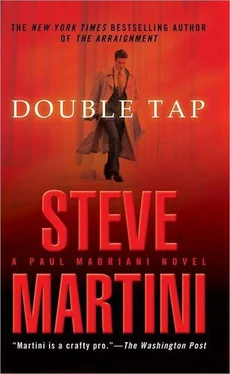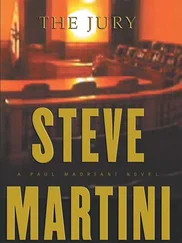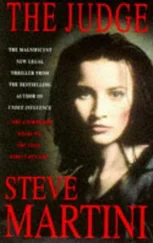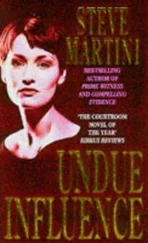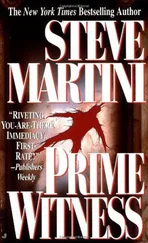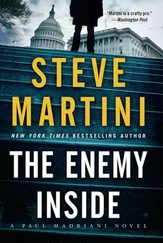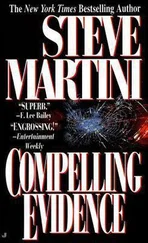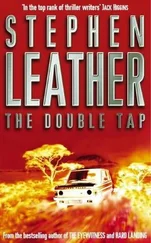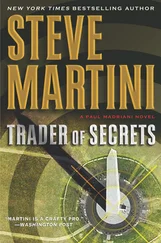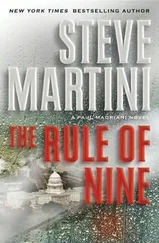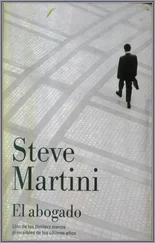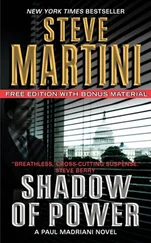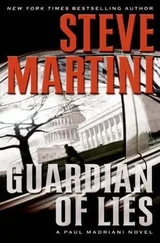Steve Martini - Double Tap
Здесь есть возможность читать онлайн «Steve Martini - Double Tap» весь текст электронной книги совершенно бесплатно (целиком полную версию без сокращений). В некоторых случаях можно слушать аудио, скачать через торрент в формате fb2 и присутствует краткое содержание. Год выпуска: 2014, ISBN: 2014, Издательство: Jove, Жанр: Триллер, на английском языке. Описание произведения, (предисловие) а так же отзывы посетителей доступны на портале библиотеки ЛибКат.
- Название:Double Tap
- Автор:
- Издательство:Jove
- Жанр:
- Год:2014
- ISBN:9781101550229
- Рейтинг книги:4 / 5. Голосов: 1
-
Избранное:Добавить в избранное
- Отзывы:
-
Ваша оценка:
- 80
- 1
- 2
- 3
- 4
- 5
Double Tap: краткое содержание, описание и аннотация
Предлагаем к чтению аннотацию, описание, краткое содержание или предисловие (зависит от того, что написал сам автор книги «Double Tap»). Если вы не нашли необходимую информацию о книге — напишите в комментариях, мы постараемся отыскать её.
Double Tap — читать онлайн бесплатно полную книгу (весь текст) целиком
Ниже представлен текст книги, разбитый по страницам. Система сохранения места последней прочитанной страницы, позволяет с удобством читать онлайн бесплатно книгу «Double Tap», без необходимости каждый раз заново искать на чём Вы остановились. Поставьте закладку, и сможете в любой момент перейти на страницу, на которой закончили чтение.
Интервал:
Закладка:
The silencer, manufactured by a company in Vero Beach, Florida, that specializes in sound suppression for firearms, is a cylindrical tube about eight inches long. Its exterior is made of dull blued gunmetal with small round dimples lining the outside.
“That was discovered by one of the evidence technicians outside the rear seawall of the victim’s residence on the rocks overlooking the beach,” says Perryman.
“And you observed this before it was touched by any of the attending officers or your own staff?”
“I did.”
“And did you have it photographed?”
“Yes.” Perryman identifies the photograph, a picture of the silencer lying on its side on the rocks perhaps ten feet from the edge where they drop off into the surf. Both the firearm and the silencer are neatly laid out on a small table in front of the jury box where jurors can observe them without touching them.
“Did you or your staff find any loaded cartridges at the scene: unfired bullets either of the caliber of the subject weapon or any other firearm?”
“No, we did not.”
“No loaded cartridges either inside or outside the house?”
“None that we found. And we looked thoroughly, including the use of metal detectors and the use of dogs trained to detect the odor of accelerants, including gunpowder.”
“Were there any fired or spent cartridges either inside or outside of the victim’s house?”
“None that we found,” says Perryman. “Again, we checked using canines attached to the bomb-detection unit.”
This is a mystery: why, with only two rounds fired, the police found two empty pistol clips belonging to the handgun and no spent cartridge casings.
“And the police canine units came up with nothing?”
“Not exactly,” says Perryman. “They found no spent cartridges. They did detect traces of expended accelerants along the railing on the second-floor landing above the entry area of the house and on top of one of the glass display cabinets just beneath that area.”
“When you say expended accelerants , could you explain for the jury what you mean?” says Templeton.
“One of the dogs found traces of a substance including particulates of nitrate that were probably dislodged from the inside of a spent cartridge casing when it bounced on the top of the cabinet beneath the railing. Swabs were taken which later tested positive for concentrations of nitrates, both burned and unburned. These were found to be consistent with the discharge of smokeless gunpowder.”
“I see,” says Templeton. “Did you form any conclusions as to what had happened at those locations as a result of these findings?”
“I did.”
“And what were those conclusions?”
“That a firearm was most likely discharged in the area along the railing at the second-floor landing and that the nitrates discharged by this action settled along the railing and top of the display cabinet beneath it.”
“I see. Were you able to determine whether the shots that killed Madelyn Chapman were fired from that location?”
“It is my opinion that they were. We checked all other areas in the house that would have a clear and unimpeded line of fire to the location where the body was found in the entry hall. None of those locations came up positive for traces of nitrates.”
“So by process of elimination you concluded that the shots that killed Madelyn Chapman were fired from the area of the second-floor landing above the entry?”
“That’s correct.”
Templeton has the witness identify photographs of this area, several shots looking up from the vicinity around the front door as well, as three photos, one with the crosshairs of a sight superimposed on the lens, aimed down at the floor of the entry hall in the area where Chapman’s body was found. A chalk outline of her body drawn on the floor is still visible in the three pictures. These go up on the visualizer for the jury.
“Now let me ask you,” says Templeton, “did you measure the distance from the railing in the area where you detected traces of nitrates to the location where the victim’s body was found, on the floor of the entry?”
“I did.”
“And what did you determine that distance to be?”
Perryman doesn’t even bother to refer to his notes. He has memorized this, one of the key elements of their case along with the rapidity of the two shots, the distance to the target.
“Twenty-one feet four inches, if you take into account the height of the victim when she was standing and the fact that the gun would most likely have been held at arm’s length in a two-handed firing stance and slightly out over the railing.”
“Over twenty feet?” says Templeton.
“That’s correct.”
“Two shots, both of which according to evidence already introduced were tightly grouped within slightly more than half an inch, and both of which struck the victim in the head?”
“As I understand it,” says Perryman.
“That’s some shooting,” says Templeton.
“Objection.”
“Sustained. Mr. Templeton, let’s allow the witnesses to testify. Keep your comments to yourself. The jury will disregard the statement made by the prosecutor.”
“Sorry, Your Honor.” Templeton gives the judge one of his harmless smiles, open palms out and extended like a miniature Jolson.
He then moves on to defuse one of the problem areas of his case. Templeton covers the Orb at the Edge , which is still missing. “Did you find any remnants of this, the glass art object that we know the victim purchased the day that she was killed?”
“No. But we did find the cardboard box and pieces of tape and packing materials. It appears that she had just finished unpacking this in the kitchen, a short time before she was killed.”
An earlier witness has already identified these materials. The merchant who sold her the art glass told the jury that the materials were gathered from the storeroom at the back of his shop and used to pack the glass before it was loaded into the front seat of Chapman’s car.
“So the killer could have taken the item?” says Templeton.
“I don’t know. All I can say is that we didn’t find it at the scene.”
“And I assume that anyone who took it would probably want to dispose of it as quickly as possible.”
“Objection. Calls for speculation.”
“Mr. Templeton. Please,” says Gilcrest.
“Allow me to rephrase it, Your Honor.” Having made his point, Templeton proceeds to make it again. “Let me ask you, have you seen pictures of the art object in question, what are called catalog photos?”
“I have,” says Perryman.
“Was it your understanding, based solely on your investigation, that the glass art item known as the Orb at the Edge was unique, a one-of-a-kind item?”
“Objection. Calls for speculation. The witness is not an art expert.”
Gilcrest weighs this for a moment. “I’ll allow the witness to answer based solely on his understanding of what he discovered during the course of his investigation.”
“From everything I learned during the course of the investigation,” the witness says, treading carefully, “it was unique. A one-of-a-kind item, as you say, and expensive.”
“So, based on this, if this item-once owned by the victim Madelyn Chapman and in her possession on the day that she was murdered-were suddenly to be found in the possession of another person, as an expert witness in the field of criminalistics and forensic evidence, I assume you would consider this to be incriminating evidence?”
“You bet. Absolutely.”
“And let me ask you this, based solely on your expertise and your experience in the field of evidence: Have you ever seen situations in which an accused criminal perpetrator or a suspect was motivated to dispose of physical evidence when that evidence might link them to a crime?”
Читать дальшеИнтервал:
Закладка:
Похожие книги на «Double Tap»
Представляем Вашему вниманию похожие книги на «Double Tap» списком для выбора. Мы отобрали схожую по названию и смыслу литературу в надежде предоставить читателям больше вариантов отыскать новые, интересные, ещё непрочитанные произведения.
Обсуждение, отзывы о книге «Double Tap» и просто собственные мнения читателей. Оставьте ваши комментарии, напишите, что Вы думаете о произведении, его смысле или главных героях. Укажите что конкретно понравилось, а что нет, и почему Вы так считаете.
